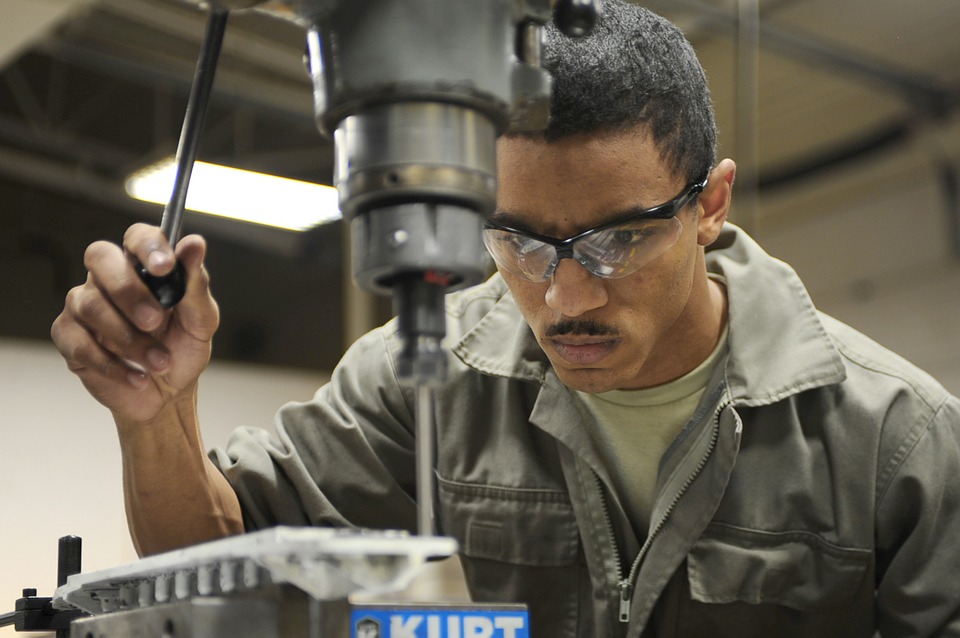
That white workers suffered is well known. But the unique plight of black workers is often ignored.
One of the chief narratives from the 2016 presidential campaign is that President Trump was propelled to victory because of white working class voters in industrial states like Ohio, Pennsylvania and Wisconsin.
There likely is some truth to that. But what that narrative often leaves out is the fact that black communities in cities across the United States also have seen devastating factory job loss in recent decades — and in many instances, those communities have struggled to recover even more so than other areas.
The Atlantic recently examined the impact of manufacturing job loss in black neighborhoods in Chicago as part of a story on the divide between rich and poor in the Windy City. While Chicago’s downtown has attracted big-name companies and a college-educated workforce, things remain bleak in the city’s black neighborhoods.
Chicago’s legacy of segregation is one reason, and decisions by city officials to pour money into downtown made that problem worse. But another reason is the loss of manufacturing:
“Half a century ago, people with little education could find good jobs in the behemoths that dotted Chicago’s south and west sides. Now, most of those factories have moved overseas or to the suburbs, and there are fewer employment opportunities … Chicago underscores that it’s not just white, rural Americans who have been hard hit by the disappearance of manufacturing jobs.”
Indeed, black manufacturing workers often struggled more than their white counterparts when factories closed up shop, as Alliance for American Manufacturing research fellow Gerald Taylor examined in his 2016 report, Unmade in America: Industrial Flight and the Decline of Black Communities.
Manufacturing in the 20th century provided new opportunities for many black workers. Although black Americans still faced discrimination, working in manufacturing allowed many of them to do things like buy houses, save a little money and build vibrant communities. For the first time, many black families moved into the middle class.
But when manufacturing jobs began to offshore, America’s black communities were hit especially hard, Taylor found. More black workers found themselves unemployed than white workers and stayed unemployed for longer.
On top of that, black Americans faced unique challenges such as housing discrimination — meaning that while laid off white workers could move to new communities for work, black workers often found themselves stuck. And as The Chicago Maroon points out, while many white workers were offered government-sponsored retraining after losing their jobs, “after the plants in black areas left, there were no such retraining efforts.”
All of this has led to devastation in many black communities, according to Taylor:
“As black families attempted to adjust to this strained existence, the cities and towns in which they lived also struggled to remain financially solvent. Industrial centers tended to be small and not economically diverse … As such, when their manufacturing bases began to erode—along with the associated income and property tax revenue—these communities were often left ill-equipped to maintain their infrastructure, as well as vital public services.”
So what are the potential solutions?
Taylor outlined a few in his report, including infrastructure investment and worker-friendly trade policies. He also advocated for a big increase in workforce training, which must be coupled with outreach to the black community and financial support to ensure people can pay for the training.
Millions of American workers have suffered over the past several decades when companies moved production overseas, and as a result many fell out of the middle class. This should be a concern to policymakers, who must find ways to strengthen American manufacturing and create more jobs — which still provide better pay and benefits than other sectors, we’ll point out.
But we do a disservice when we further the narrative that only white, working class Americans were hurt by manufacturing job loss. Black manufacturing workers were hit especially hard by industrial flight, and black communities in places like Chicago, St. Louis, Birmingham, Baltimore and Pittsburgh continue to struggle as a result.
